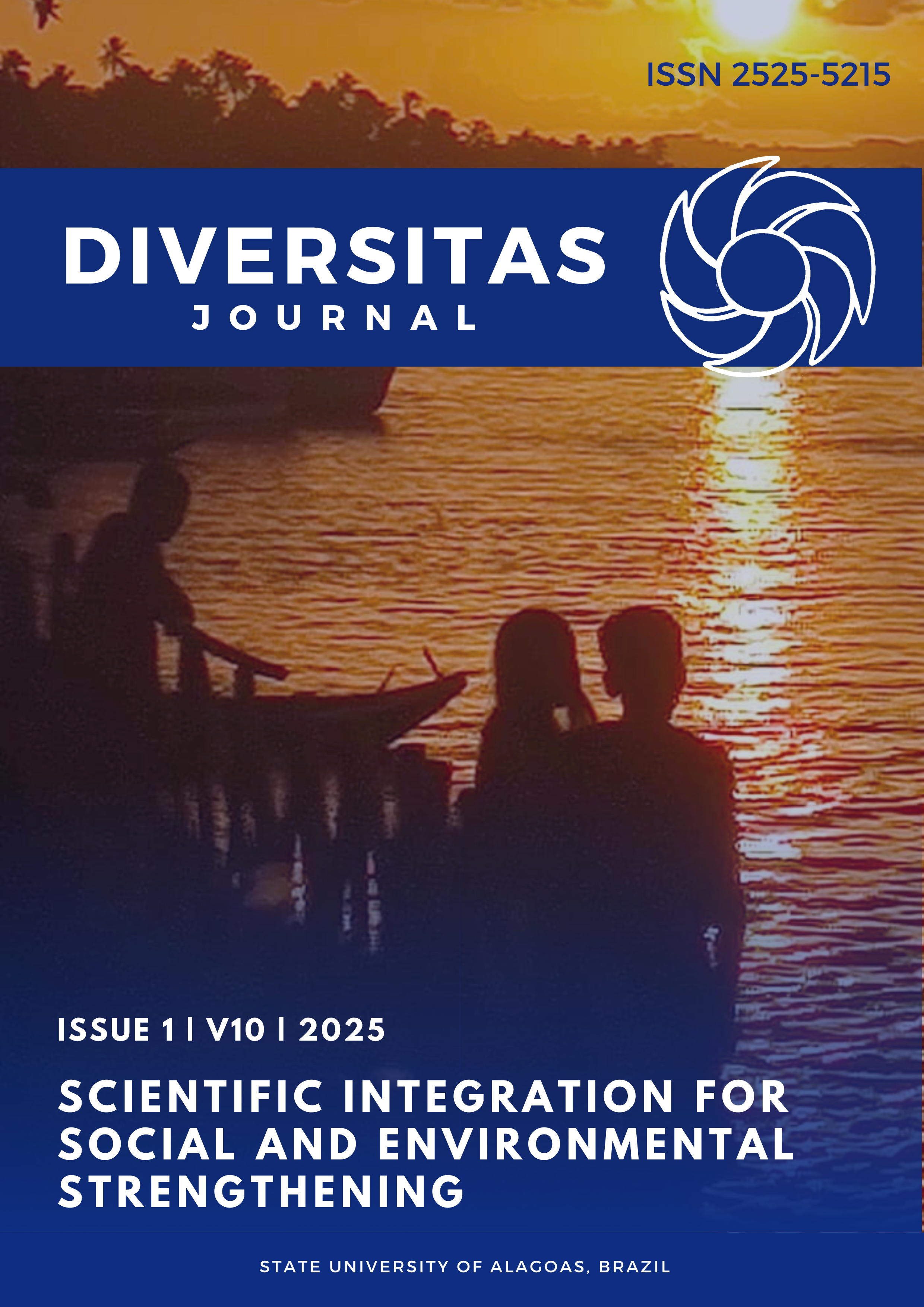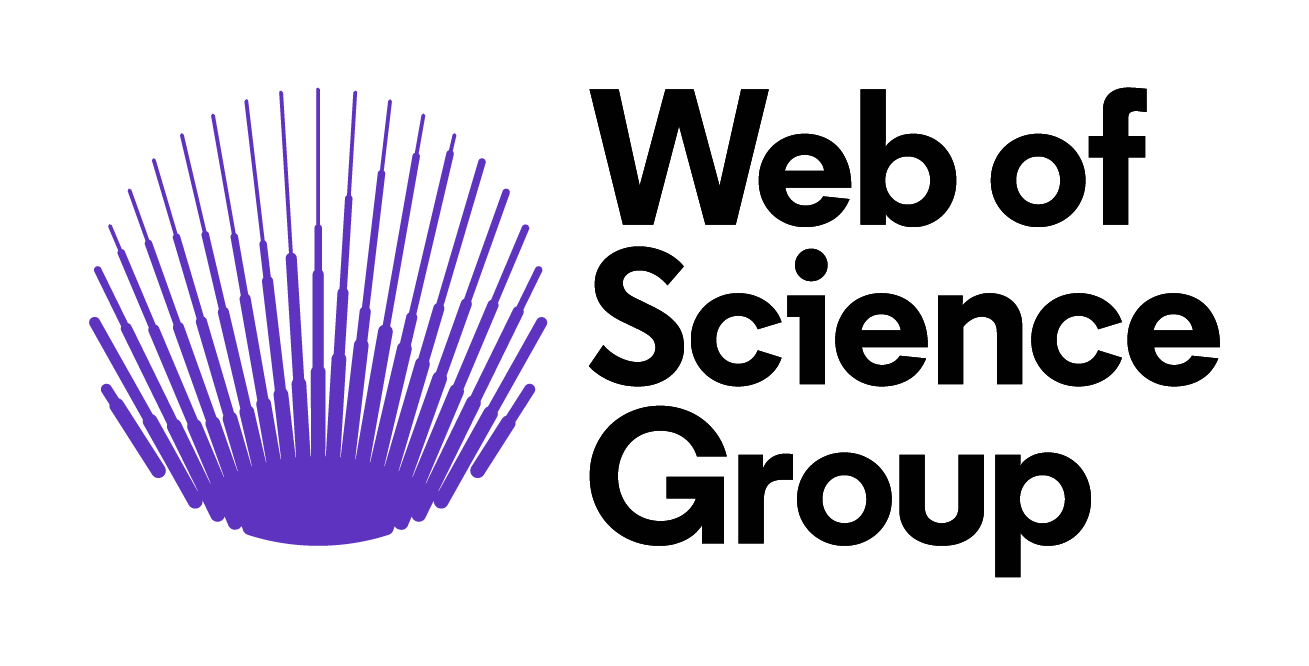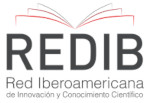Desempenho fisiológico de Coffea arábica cultivado em diferentes sombreamentos no semiárido brasileiro
DOI:
https://doi.org/10.48017/dj.v10i1.3032Palavras-chave:
Fotossíntese, eficiência de uso da água, radiação solarResumo
O café é uma das bebidas mais consumidas no mundo e sua produção é oriunda do trabalho de aproximadamente 100 milhões de cafeicultores em todo o planeta. Para seu cultivo em regiões semiáridas é necessário manejos que ajudem a mitigar possíveis estresses abióticos e bióticos, uma alternativa para se produzir nesses ambientes é a utilização de sombrites, pois, o sombreamento ajuda a reduzir os danos pela radiação e contribui na mitigação dos efeitos deletérios na fotossíntese gerados pela saturação por luz. Neste contexto, o objetivo deste estudo foi determinar a influência de diferentes sombreamentos nas características fotossintéticas de plantas jovens de café arábica, sob condições de semiárido brasileiro. O experimento foi realizado seguindo o delineamento em blocos casualizados, com 4 tratamentos e 8 repetições, totalizando 32 unidades experimentais. Os quatro tratamentos foram: 1- Pleno sol; 2- 50% de sombreamento, 3- 70% de sombreamento e 4- 80% de sombreamento. As variáveis fisiológicas avaliadas foram: fotossíntese liquida, transpiração, condutância estomática e concentração de CO2 interna, utilizando o analisador de gás por infravermelho (IRGA-Ci340). Além disso, foram obtidos os valores de eficiência da carboxilação; eficiência de uso da água e a eficiência intrínseca do uso da água. Os resultados mostraram que o café sombreado com 50 e 70 % apresentou aumento na taxa fotossintética. As condições de cultivo a pleno sol e a 80% de sombreamento reduziram de forma específica a fotossíntese das plantas de café arábica, var. Catuaí vermelho. A eficiência do uso da água, a eficiência de carboxilação e a eficiência intrínseca do uso da água não sofreram influência significativa dos sombreamentos. De forma relativa, a condição de 50% de sombreamento favoreceu a maior eficiência do uso de água e a maior eficiência intrínseca do uso de água.
Métricas
Referências
Bernado, W. D. P., Rakocevic, M., Santos, A. R., Ruas, K. F., Baroni, D. F., Abraham, A. C., ... & Rodrigues, W. P. (2021). Biomass and leaf acclimations to ultraviolet solar radiation in juvenile plants of Coffea arabica and C. canephora. Plants, 10(4), 640. https://doi.org/10.3390/plants10040640
Bez, C., Esposito, A., Musonerimana, S., Nguyen, T. H., Navarro-Escalante, L., Tesfaye, K., ... & Venturi, V. (2023). Comparative study of the rhizosphere microbiome of Coffea arabica grown in different countries reveals a small set of prevalent and keystone taxa. Rhizosphere, 25, 100652. https://doi.org/10.1016/j.rhisph.2022.100652
Carins Murphy, M. R., Jordan, G. J., & Brodribb, T. J. (2012). Differential leaf expansion can enable hydraulic acclimation to sun and shade. Plant, Cell & Environment, 35(8), 1407-1418. https://doi.org/10.1111/j.1365-3040.2012.02498.x
Castanheira, D. T., Rezende, T. T., Baliza, D. P., Guedes, J. M., Carvalho, S. P., Guimarães, R. J., & Viana, M. T. R. (2016). Potential use of anatomical and physiological characteristics in the selection of coffee progenies. http://www.coffeescience.ufla.br/index.php/Coffeescience/article/view/1105/pdf_1105
Cavalcanti, F. D. A. (1998). Recomendações de adubação para o Estado de Pernambuco: 2a. aproximacao. IPA.
Chagas, W. F. T., Silva, D. R. G., Lacerda, J. R., Pinto, L. C., Andrade, A. B., & Faquin, V. (2019). Nitrogen fertilizers technologies for coffee plants. http://dx.doi.org/10.25186/cs.v14i1
Chen, J., Wu, S., Dong, F., Li, J., Zeng, L., Tang, J., & Gu, D. (2021). Mechanism underlying the shading-induced chlorophyll accumulation in tea leaves. Frontiers in Plant Science, 12, 779819. https://doi.org/10.3389/fpls.2021.779819
Companhia Nacional de Abastecimento - CONAB (2022). Safra brasileira de café. https://www.conab.gov.br/info-agro/ safras/café.
DaMatta, C.P.; Oliveira, M.; Maestri, R.S.; Barros. (2010). Café: Meio Ambiente e Fisiologia da Lavoura Ecofisiologia das Culturas Arbóreas Tropicais, Nova Science Publishers, 181-216.
DaMatta, F. M. (2004). Ecophysiological constraints on the production of shaded and unshaded coffee: a review. Field crops research, 86(2-3), 99-114. https://doi.org/10.1016/j.fcr.2003.09.001
Davis, A. P., Chadburn, H., Moat, J., O’Sullivan, R., Hargreaves, S., & Nic Lughadha, E. (2019). High extinction risk for wild coffee species and implications for coffee sector sustainability. Science advances, 5(1), eaav3473. https://doi.org/10.1126/sciadv.aav3473
de Abreu, D. P., Roda, N. D. M., de Abreu, G. P., Bernado, W. D. P., Rodrigues, W. P., Campostrini, E., & Rakocevic, M. (2022). Kaolin film increases gas exchange parameters of coffee seedlings during transference from nursery to full sunlight. Frontiers in Plant Science, 12, 784482. https://doi.org/10.3389/fpls.2021.784482
dos Reis, C. O., Magalhães, P. C., Avila, R. G., Almeida, L. G., Rabelo, V. M., Carvalho, D. T., ... & de Souza, T. C. (2019). Action of N-Succinyl and N, O-Dicarboxymethyl chitosan derivatives on chlorophyll photosynthesis and fluorescence in drought-sensitive maize. Journal of Plant Growth Regulation, 38, 619-630. https://doi.org/10.1007/s00344-018-9877-9
Gokavi, N., Mukharib, D. S., Mote, K., Manjunatha, A. N., e Raghuramulu, Y. (2019). Estudos sobre geometria de plantio e métodos de poda para melhorar a produtividade e reduzir o trabalho pesado em café arábica cultivar Chandragiri. J. Colheita. Erva daninha.15, 58–64.
Hammer, Ø.; Harper, D.A.T.; Ryan, P.D. (2001). PAST: Palaeontological statistics software package for education and data analysis. Palaeontol. Electron. 4, (9). https://palaeo-electronica.org/2001_1/past/spain.htm
Hatamian, M., Arab, M., & Roozban, M. R. (2015). Stomatal behavior of two rose cultivar under different light intensities. J. Agric. Crops Prod, 17, 1-11. https://jci.ut.ac.ir/article_56490_fc658248223d8a01a295de3614e8bd8a.pdf?lang=en
Hu, F., Bi, X., Liu, H., Fu, X., Li, Y., Yang, Y., ... & Shi, R. (2022). Transcriptome and carotenoid profiling of different varieties of Coffea arabica provides insights into fruit color formation. Plant Diversity, 44(3), 322-334. https://doi.org/10.1016/j.pld.2021.11.005
León-Burgos, A. F., Unigarro, C., & Balaguera-López, H. E. (2022). Can prolonged conditions of water deficit alter photosynthetic performance and water relations of coffee plants in central-west Colombia?. South African Journal of Botany, 149, 366-375. https://doi.org/10.1016/j.sajb.2022.06.034
Lisboa, L. A. M., Cunha, M. L. O., Nakayama, F. T., de FIGUEIREDO, P. A. M., da Silva Viana, R., Ramos, S. B., & Ferrari, S. (2021). Morphophysiological characteristics of arabic coffee. Nativa, 9(1), 36-43. https://doi.org/10.31413/nativa.v9i1.11066
Martins, S. C., Galmes, J., Cavatte, P. C., Pereira, L. F., Ventrella, M. C., & DaMatta, F. M. (2014). Understanding the low photosynthetic rates of sun and shade coffee leaves: bridging the gap on the relative roles of hydraulic, diffusive and biochemical constraints to photosynthesis. PLoS One, 9(4), e95571. https://doi.org/10.1371/journal.pone.0095571
Matiello, J. B., Santinato, R., Garcia, A. W. R., ALMEIDA, S. D., & Fernandes, D. R. (2010). Cultura de café no Brasil: manual de recomendações. Rio de Janeiro: MAPA/Procafé.
Mayoli, R. N., & Gitau, K. M. (2012). The effects of shade trees on physiology of arabica coffee. African Journal of Horticultural Science, 6, 35-42.
Mendes, K. R., Marenco, R. A., & Nascimento, H. C. S. (2017). Velocidade de carboxilação da rubisco e transporte de elétrons em espécies arbóreas em resposta a fatores do ambiente na Amazônia Central. Ciência Florestal, 27, 947-959. https://doi.org/10.5902/1980509828666
Mırosavljevıć, M., Momčılovıć, V., Jockovıć, B., Zorıć, M., Aćın, V., Denčıć, S., & Pržulj, N. (2018). Identification of Favourable Testing Locations for Barley Breeding in South Pannonian Plain. Journal of Agricultural Sciences, 24(3), 303-311. https://doi.org/10.15832/ankutbd.451279
Nascimento, E. A. D., Oliveira, L. E. M. D., Castro, E. M. D., Delú Filho, N., Mesquita, A. C., & Vieira, C. V. (2006). Morphophysiological alternations in leaves of Cofeea arabica L. plants in consort with Hevea brasiliensis Muell. Arg. Ciência Rural, 36, 852-857. https://doi.org/10.1590/S0103-84782006000300019
Navarro, F. E., Santos, J. A., Martins, J. B., Cruz, R. I., Silva, M. M. D., & Medeiros, S. D. S. (2022). Physiological aspects and production of coriander using nutrient solutions prepared in different brackish waters. Revista Brasileira de Engenharia Agrícola e Ambiental, 26(11), 831-839. https://doi.org/10.1590/1807-1929/agriambi.v26n11p831-839
Nobre, R. G., Rodrigues Filho, R. A., Lima, G. S. de ., Linhares, E. L. da R., Soares, L. A. dos A., Silva, L. de A., Teixeira, A. D. da S., & Macumbi, N. J. V.. (2023). Gas exchange and photochemical efficiency of guava under saline water irrigation and nitrogen-potassium fertilization . Revista Brasileira De Engenharia Agrícola E Ambiental, 27(5), 429–437. https://doi.org/10.1590/1807-1929/agriambi.v27n5p429-437.
Pérez-Molina, J. P., de Toledo Picoli, E. A., Oliveira, L. A., Silva, B. T., de Souza, G. A., dos Santos Rufino, J. L., ... & Ferreira, W. P. M. (2021). Treasured exceptions: Associa-tion of morphoanatomical leaf traits with cup quality of Coffea arabica L. cv.“Catuaí”. Food research international, 141, 110118. https://doi.org/10.1016/j.foodres.2021.110118
Racskó, J., Szabó, T., Nyéki, J., Soltész, M., & Nagy, P. T. (2010). Characterization of sunburn damage to apple fruits and leaves. International Journal of Horticultural Science, 16(4), 15-20. https://doi.org/10.31421/IJHS/16/4/909
Rakocevic, M., Batista, E. R., Pazianotto, R. A., Scholz, M. B., Souza, G. A., Campostrini, E., & Ramalho, J. C. (2021). Leaf gas exchange and bean quality fluctuations over the whole canopy vertical profile of Arabic coffee cultivated under elevated CO2. Functional Plant Biology, 48(5), 469-482. https://doi.org/10.1071/FP20298
Rezai, S., Etemadi, N., Nikbakht, A., Yousefi, M., & Majidi, M. M. (2018). Effect of light intensity on leaf morphology, photosynthetic capacity, and chlorophyll content inSage (Salvia officinalis l.). Horticultural Science and Technology, 36(1), 46-57. https://doi.org/10.12972/kjhst.20180006
Ribeiro, A. F. F., Matsumoto, S. N., Pereira, L. F., Oliveira, U. S., Teixeira, E. C., & Ramos, P. A. S. (2019). Content of photosynthetic pigments and leaf gas exchanges of young coffee plants under light restriction and treated with paclobutrazol. Journal of Experimental Agriculture International, 32(6), 1-13. https://doi.org/10.9734/JEAI/2019/v32i630128
Rocha, O. C., Guerra, A. F., Silva, F. A. M., Machado Júnior, J. R. R., de ARAÚJO, M. C., & Silva, H. C. (2006). Programa para monitoramento de irrigação do cafeeiro no cerrado.
Santos, L.A.; Lorenzetti, E.R.; Souza, P.E.; de Paula, P.V. A.A.; e Luz, A.L.F. (2016). Escaldamento no café: exposição facial e danos fotossintéticos. Tecnol. Agropec.10, 13–17.
Sharma, R. R., Datta, S. C., & Varghese, E. (2018). Effect of Surround WP®, a kaolin-based particle film on sunburn, fruit cracking and postharvest quality of ‘Kandhari’pomegranates. Crop Protection, 114, 18-22. https://doi.org/10.1016/j.cropro.2018.08.009
Silva, E. A. Á. D. (2019). TROCAS GASOSAS, CRESCIMENTO E PRODUTIVIDADE DE CAFEEIROS (Coffea arabica) IRRIGADOS EM CERES-GOIÁS. https://repositorio.ifgoiano.edu.br/handle/prefix/1780
Tadesse, M. (2021). Produção em massa e partição de biomassa em mudas de genótipos de café Harerghe sob irrigação deficitária em Jimma, sudoeste da Etiópia. Revista Americana de Ciências da Vida, 9(4), 67-72.
Tang Xinglin, Jiang Jiang, Jin Hongping, Zhou Chen, Liu Guangzheng, & Yang Hua. (2019). Efeitos do sombreamento no teor de clorofila e propriedades fotossintéticas de Phoebe bougainvillea. Yingyong Shengtai Xuebao, 30(9).
Taugourdeau S, Maire G, Avelino J, Jones JR, Ramirez LG, Quesada MJ, Charbonnier F, Gómez-Delgado F, Harmand J, Rapidel B, Vaast P, Roupsard O (2014) Leaf area index as an indicator of ecosystem services and management practices: An application for cof-fee agroforestry. Agriculture, Ecosystems and Environment 192:19-37. https://doi.org/10.1016/j.agee.2014.03.042
Thakur, M., Bhatt, V., & Kumar, R. (2019). Effect of shade level and mulch type on growth, yield and essential oil composition of damask rose (Rosa damascena Mill.) un-der mid hill conditions of Western Himalayas. PloS one, 14(4), e0214672. https://doi.org/10.1371/journal.pone.0214672
Ulm, R., & Jenkins, G. I. (2015). Q&A: How do plants sense and respond to UV-B radiation?. BMC biology, 13, 1-6. https://doi.org/10.1186/s12915-015-0156-y
Venancio, L. P., Do Amaral, J. F. T., Cavatte, P. C., Vargas, C. T., Dos Reis, E. F., & Dias, J. R. (2019). Vegetative growth and yield of robusta coffee genotypes cultivated under different shading levels. Bioscience Journal, 35(5), 1490-1503. http://www.seer.ufu.br/index.php/biosciencejournal/article/view/45039/27073
Venancio, L. P., Filgueiras, R., Mantovani, E. C., do Amaral, C. H., da Cunha, F. F., dos Santos Silva, F. C., ... & Cavatte, P. C. (2020). Impact of drought associated with high temperatures on Coffea canephora plantations: a case study in Espírito Santo State, Brazil. Scientific Reports, 10(1), 19719. https://doi.org/10.1038/s41598-020-76713-y
Wang, Y.N.; Dong, L.N.; Ding, Y.F.; Li, H.; Song, P.; Cai, H. & Xu, Z.H. (2020). Effects of shading on photosynthetic characteristics and chlorophyll fluorescence parameters of four Corydalis species. Ying Yong Sheng Tai Xue Bao, 31(3). https://doi.org/10.13287/j.1001-9332.202003.004
Downloads
Publicado
Como Citar
Edição
Seção
Licença
Copyright (c) 2025 Mateus Ferreira Andrade, Tânia da Silva Siqueira, Josimar Bento Simplicío, Monalisa Alves Diniz Silva

Este trabalho está licenciado sob uma licença Creative Commons Attribution 4.0 International License.
O periodico Diversitas Journal expressa que os artigos são de unica responsabilidade dos Autores, conhecedores da legislação Brasileira e internacional. Os artigos são revisados pelos pares e devem ter o cuidado de avisar da possível incidencia de plagiarismo. Contudo o plagio é uma ação incontestavel dos autores. A Diversitas Journal não publicará artigos com indicios de Plagiarismos. Artigos com plagios serão tratados em conformidade com os procedimentos de plagiarismo COPE.
A violação dos direitos autorais constitui crime, previsto no artigo 184, do Código Penal Brasileiro:
“Art. 184 Violar direitos de autor e os que lhe são conexos: Pena – detenção, de 3 (três) meses a 1 (um) ano, ou multa. § 1o Se a violação consistir em reprodução total ou parcial, com intuito de lucro direto ou indireto, por qualquer meio ou processo, de obra intelectual, interpretação, execução ou fonograma, sem autorização expressa do autor, do artista intérprete ou executante, do produtor, conforme o caso, ou de quem os represente: Pena – reclusão, de 2 (dois) a 4 (quatro) anos, e multa.”


















